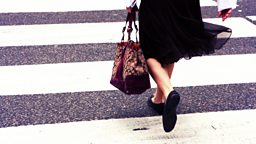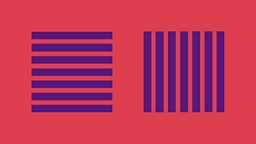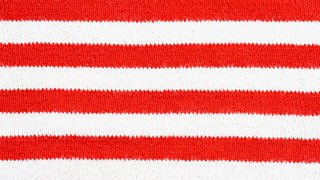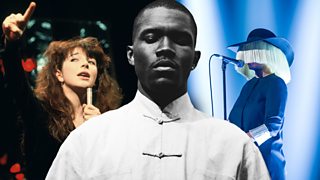Seven things you might not know about stripes
Horizontal stripes have been used to draw the eye and signpost the audacious for centuries. Whether used on a lighthouse or a zebra crossing, stripes grab our attention and in the very same moment tell us to stay away. They're the uniform of the outcast, the maverick, and the carnivalesque.
Here are seven things you might not know about stripes…

1. They've saved sailors for centuries
Stripes have been worn by those working in and around the sea for centuries and may have saved countless lives. A striped top acted like early Hi Vis; if you fell overboard, you were much more likely to be seen and rescued. Artefacts and artworks from across Europe depict sailors wearing striped jerseys from the 18th Century onwards. It’s thought the style may have come to be known as the ‘Breton’ due to the large number of seamen hailing from Brittany.
2. … And prevented prisoners escaping

Black and white hoops are the uniform of both crime and punishment: of swag bag burglar and captured convict. Hoops were the visual equivalent of the leper’s bell; if it’s hooped it’s dodgy. And if it’s dodgy then it had better stand out because you need to see it coming and stay away (striped outfits also made escape and evading recapture more difficult). The earliest striped prison uniforms were designed to symbolise prison bars and the wide horizontal stripes of later prison uniforms were “a symbol of disgrace”, branding the prisoner as transgressor.
Stripes used to be worn by social outcasts, such as prostitutes, jugglers, clowns and cripples.
3. Wearing stripes could get you killed in medieval France
In his book The Devil’s Cloth: A History of Stripes, Michel Pastoureau recounts: “In 1310, a cobbler in northern France was condemned to death because, according to local archives, he had been caught in striped clothes. At that time, striped clothing was considered demeaning, pejorative, or clearly diabolic and was worn by social outcasts, such as prostitutes, jugglers, clowns and cripples.”
4. Coco Chanel and an American expat made them ‘cool’
Beyond sailors and fishermen, some of the first people to wear the striped jersey were the artists and writers drawn to the French Riviera from the early 1900s. Coco Chanel was often spotted sporting the androgynous striped jersey and is credited with introducing nautical workwear into high fashion circles. It’s thought she was introduced to them by American couple Gerald and Sara Murphy, who were F Scott Fitzgerald’s inspiration for the Drivers in Tender is the Night. The Murphy’s hosted a fashionable bohemian set at their Riviera home, including Fitzgerald, Ernest Hemingway and Cole Porter. On a shopping trip to Marseilles, Gerald picked up a bunch of striped tops and distributed them to his guests – transforming them into chic leisurewear. Many other cult figures went on to don stripes, including Marlon Brando, Andy Warhol, Brigitte Bardot, and of course Pablo Picasso. Later in the 20th Century, the Ramones, John Paul Gaultier and Kurt Cobain ensured the striped top sustained its status as a symbol of maverick cool.
5. Horizontal stripes might not be fattening after all
We’ve always been told that horizontal stripes are fattening, but new research suggests this may not actually be the case. Try this experiment which shows how perception and reality are at odds. Stand a one pound coin on its side and next to it stack as many one pound coins as you believe will match its height. Spoiler alert: you’ll have typically underestimated the amount of coins by about 30%. The horizontal orientation of the coins make the pile appear taller than it really is, due to what is known as the Helmholtz illusion. A square comprising horizontal stripes looks taller and narrower than an identical square comprising vertical stripes.

6. They give some people headaches
It’s well known that flashing lights can trigger epileptic fits or migraines but new research suggests that certain still images can have a similar effect. Researchers at the University Medical Center in Utrecht found that stripes produce strong gamma oscillations in the brain. Viewing stripes can cause headaches even in those who are not usually photosensitive. Some people go as far avoiding stripes in clothing and artwork within their homes, even covering up radiator grills and blinds to avoid stimulating a reaction.
7. … But make other’s feel a sense of calm
Vertically striped walls lend an air of prestige to a room with their upright and noble orientation. Fluted columns or stripes placed either side of a fireplace or ornament add serious hype. Their horizontal counterparts however can bring a sense of peace and calm, which is why designers favour them in waiting rooms and bedrooms, allowing our eyes to rest on a manmade horizon.

More seriously good documentaries
-
![]()
Out of Line
Why do horizontal stripes command so much attention?
-
![]()
Stories to keep you riveted.
-
![]()
Enigmatic performers who shunned the spotlight.
-
![]()
Being Bored: The Importance of Doing Nothing
Should we be happy being bored?




